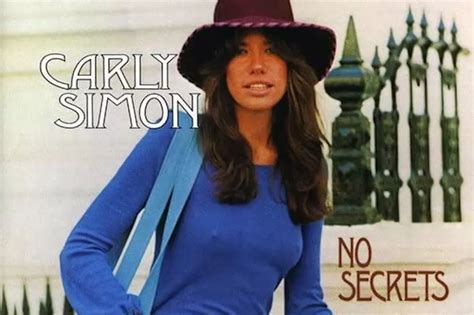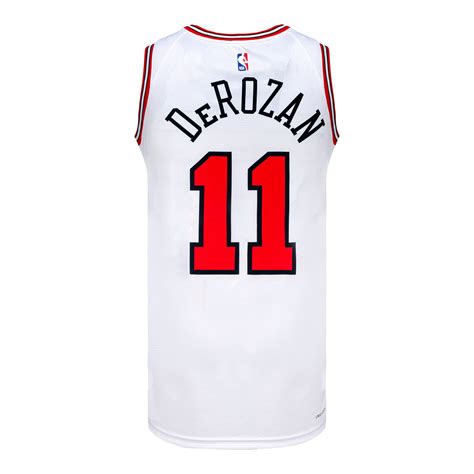
Sabrina Carpenter’s album art for her upcoming album, “Short n’ Sweet,” has ignited a social media firestorm, drawing comparisons to Carly Simon’s 1972 album cover for “Carly Simon.” Simon herself has weighed in on the controversy, stating, “Been there!” suggesting a shared experience of facing scrutiny over album artwork.
The controversy stems from perceived similarities between Carpenter’s album cover, which features her in a blue vintage car looking over her shoulder with windswept hair and a visible lipstick smudge, and Simon’s iconic “Carly Simon” cover, which also features the singer looking over her shoulder in a similar pose. Social media users have accused Carpenter of copying or drawing too much inspiration from Simon’s cover, sparking a debate about originality and artistic influence.
According to a Yahoo Entertainment article, the resemblance between the two covers is undeniable to many observers. Carpenter’s team has yet to officially respond to the allegations of imitation, leaving social media users to speculate about the intent behind the album art. The situation has reignited discussions about the challenges female artists face regarding their image and the fine line between inspiration and replication in the music industry. Simon’s simple acknowledgement adds another layer to the discussion.
The release of Carpenter’s “Short n’ Sweet” is slated for August 23, further amplifying anticipation and scrutiny surrounding the album’s content and overall artistic direction, making the album artwork a key talking point ahead of its debut. The debate touches on themes of homage, appropriation, and the pressures faced by artists to create unique and attention-grabbing visuals in a crowded marketplace.
The roots of the album art controversy can be traced back to the initial reveal of Carpenter’s “Short n’ Sweet” album cover via her social media channels. Fans and critics alike quickly noticed the striking resemblance to Carly Simon’s self-titled debut album, leading to a flurry of posts, memes, and commentary across platforms like X (formerly Twitter), Instagram, and TikTok. The speed and intensity of the online reaction underscored the power of social media to amplify opinions and shape perceptions in the digital age.
Carly Simon’s response, though brief, carries significant weight due to her status as a legendary singer-songwriter. Her acknowledgement of having “been there” implies an understanding of the challenges and criticisms that female artists often face when it comes to their image and artistic choices. The comment also subtly suggests that such controversies are not new and have historical precedents within the music industry. This adds depth to the discussion, connecting the current debate about Sabrina Carpenter’s album art to broader themes of artistic expression, gender dynamics, and historical context.
The controversy is not just about the aesthetic similarities between the two album covers; it also taps into broader discussions about originality, artistic influence, and the pressures faced by artists to constantly innovate in a competitive environment. Some argue that Carpenter’s album art is a deliberate homage to Carly Simon, paying tribute to a pioneering female artist who paved the way for future generations. Others view it as a lack of originality, suggesting that Carpenter’s team could have been more creative in developing a unique visual identity for her album.
The debate also highlights the different perspectives of various stakeholders, including artists, fans, critics, and industry professionals. Each group brings its own set of expectations, values, and biases to the discussion, shaping the narrative and influencing public opinion. For example, some fans may be more forgiving of perceived similarities if they admire both Carpenter and Simon, while others may be more critical if they feel that Carpenter is unfairly benefiting from Simon’s legacy.
The controversy surrounding Sabrina Carpenter’s “Short n’ Sweet” album art serves as a reminder of the importance of visual communication in the music industry. Album covers are not just marketing tools; they are also artistic statements that can shape perceptions, evoke emotions, and contribute to an artist’s overall brand identity. In an era of digital consumption, where music is often consumed in a visual context, the significance of album art has only increased. Artists and their teams must carefully consider the visual message they are sending and be prepared to address any controversies that may arise.
The legal implications of the album art controversy are minimal, as the similarities are primarily aesthetic and do not involve direct copyright infringement. However, the ethical considerations are more complex. Artists have a responsibility to create original work and avoid plagiarism or undue influence from others. While it is common for artists to draw inspiration from their predecessors, there is a fine line between inspiration and imitation. The perception of whether Carpenter crossed that line is subjective and depends on individual interpretations.
The public relations aspect of the controversy is significant. Carpenter’s team must carefully manage the narrative and respond to the allegations in a way that is both respectful and strategic. Ignoring the controversy could be perceived as dismissive, while overreacting could amplify the negative attention. A balanced approach that acknowledges the similarities while emphasizing the unique aspects of Carpenter’s music and artistic vision may be the most effective way to address the situation.
The album art controversy also raises questions about the role of social media in shaping public opinion and holding artists accountable. Social media platforms have become powerful tools for fans and critics to express their views, share information, and organize collective action. In the case of Carpenter’s album art, social media played a central role in amplifying the controversy and putting pressure on Carpenter and her team to respond. This highlights the importance of social media literacy for artists and their teams, as well as the need to be proactive in managing their online reputation.
The impact of the album art controversy on the commercial success of “Short n’ Sweet” remains to be seen. While some may be turned off by the perceived lack of originality, others may be intrigued by the controversy and more likely to check out the album. Ultimately, the quality of the music will be the determining factor in whether the album is a hit or a miss. However, the controversy has undoubtedly raised awareness of the album and generated buzz, which could ultimately benefit Carpenter in the long run.
The Sabrina Carpenter album art controversy, viewed through a wider lens, speaks to a recurring theme in popular culture: the cyclical nature of trends and the ongoing dialogue between past and present. Musical and visual styles often experience revivals, reinterpretations, and remixes across different eras. What may initially appear as a direct copy can also be seen as a tribute, a reimagining, or a commentary on established tropes. In Carpenter’s case, the album art might be interpreted as a nod to the classic aesthetic of the 1970s, a decade that continues to influence contemporary fashion and design.
However, the critical response to Carpenter’s album art underscores the importance of context and execution. While drawing inspiration from the past is a common practice, artists must be mindful of how they incorporate these influences and ensure that their work feels fresh and original. This requires a nuanced understanding of the source material, as well as a willingness to experiment and push creative boundaries. The challenge lies in striking a balance between homage and innovation, between paying tribute to one’s influences and forging a unique artistic identity.
Moreover, the controversy highlights the evolving role of the audience in shaping artistic discourse. In the digital age, consumers are no longer passive recipients of art; they are active participants in the creative process. Through social media, online forums, and other platforms, they can share their opinions, critique artists’ work, and influence public perception. This increased level of engagement can be both beneficial and challenging for artists. On one hand, it provides valuable feedback and opportunities for dialogue. On the other hand, it can create intense pressure and scrutiny, making it difficult for artists to take risks and experiment with new ideas.
Looking ahead, it will be interesting to see how Sabrina Carpenter responds to the album art controversy and how it impacts her future work. Will she address the issue directly in interviews or on social media? Will she consciously try to distance herself from Carly Simon’s aesthetic in future projects? Or will she embrace the controversy and use it as an opportunity to further define her artistic identity? The answers to these questions will likely shape the trajectory of her career and influence the way she is perceived by fans, critics, and industry professionals.
The incident also prompts reflection on the broader issues of intellectual property and copyright in the digital age. While the similarities between Carpenter’s and Simon’s album covers may not constitute legal infringement, they raise ethical questions about the extent to which artists can borrow from or build upon the work of others. The legal framework governing copyright is designed to protect the rights of creators and prevent unauthorized duplication or distribution of their work. However, it is often difficult to apply these rules to cases involving artistic expression, where inspiration and influence are often intertwined.
The concept of “fair use” allows for limited use of copyrighted material for purposes such as criticism, commentary, news reporting, teaching, scholarship, and research. However, the boundaries of fair use are often unclear and subject to interpretation. In the context of album art, it can be challenging to determine whether a particular design element is sufficiently transformative to qualify as fair use or whether it constitutes an infringement of the original artist’s copyright.
The debate over Sabrina Carpenter’s album art underscores the importance of fostering a culture of creativity and originality in the music industry. While it is natural for artists to be influenced by their predecessors, it is essential that they strive to create work that is truly their own. This requires a commitment to experimentation, innovation, and self-expression. It also requires a willingness to take risks and challenge conventional norms.
The music industry can play a role in promoting originality by providing artists with the resources and support they need to develop their unique voices and visions. This includes investing in artist development programs, fostering collaboration and mentorship opportunities, and creating platforms for artists to showcase their work. It also includes promoting a culture of respect for intellectual property and encouraging artists to be mindful of the ethical implications of their creative choices.
Ultimately, the success of the music industry depends on its ability to nurture and celebrate originality. By fostering a culture of creativity and innovation, the industry can ensure that it continues to produce music that is both artistically compelling and commercially successful. The Sabrina Carpenter album art controversy serves as a reminder of the challenges and opportunities that lie ahead.
The controversy also calls into question the nature of artistic appropriation and its impact on the original creators. While some argue that appropriation can be a form of homage or commentary, others contend that it can be exploitative and disrespectful, particularly when it involves marginalized or underrepresented groups. In the case of Sabrina Carpenter’s album art, the question is whether her use of imagery similar to Carly Simon’s cover constitutes a genuine tribute or a form of cultural appropriation.
The answer to this question depends on a variety of factors, including the intent of the artist, the context in which the appropriation occurs, and the impact on the original creator. If Carpenter’s intent was to pay homage to Carly Simon and her iconic album cover, and if her use of similar imagery does not diminish or exploit Simon’s work, then it could be argued that the appropriation is justified. However, if Carpenter’s intent was simply to capitalize on the familiarity of Simon’s cover without giving proper credit or recognition, or if her use of similar imagery harms Simon’s reputation or commercial prospects, then it could be argued that the appropriation is unethical.
The impact of artistic appropriation on the original creator is a complex and often subjective issue. Some artists may feel flattered or honored when their work is appropriated by others, while others may feel violated or disrespected. The key is to engage in a dialogue with the original creator and to seek their input and consent before appropriating their work.
In addition to the ethical considerations, there are also legal implications associated with artistic appropriation. While it is generally permissible to draw inspiration from the work of others, it is not permissible to copy or reproduce copyrighted material without permission. The legal boundaries of artistic appropriation are often unclear and subject to interpretation. However, artists should be aware of the risks and take steps to protect their own work from unauthorized use.
The debate over Sabrina Carpenter’s album art underscores the importance of engaging in a thoughtful and respectful dialogue about artistic appropriation. By fostering a culture of critical awareness and ethical responsibility, we can ensure that artists are able to draw inspiration from the work of others without exploiting or disrespecting their creations. The Sabrina Carpenter album art controversy serves as a valuable case study for exploring the complexities of artistic appropriation and its impact on the music industry.
The controversy surrounding Sabrina Carpenter’s album art also serves as a poignant commentary on the pressures faced by young female artists in the music industry. Often, their image and personal brand are scrutinized as much, if not more, than their actual musical talent. The emphasis on aesthetics can lead to a constant battle to meet unrealistic beauty standards and project an image that is both appealing and authentic.
This pressure is amplified by social media, where artists are constantly bombarded with feedback, criticism, and comparisons to their peers. The constant surveillance and judgment can be overwhelming, leading to anxiety, self-doubt, and even mental health issues. The album art controversy highlights the extent to which these pressures can shape an artist’s creative choices and impact their ability to express themselves authentically.
The music industry can play a role in mitigating these pressures by promoting a more inclusive and supportive environment for young female artists. This includes challenging unrealistic beauty standards, celebrating diversity, and providing resources and support for artists’ mental health and well-being. It also includes fostering a culture of respect and collaboration, where artists feel empowered to express themselves without fear of judgment or exploitation.
Ultimately, the goal is to create a music industry that values artistic merit and authenticity above all else. By shifting the focus away from superficial aesthetics and towards genuine talent and creativity, we can empower young female artists to thrive and reach their full potential. The Sabrina Carpenter album art controversy serves as a reminder of the challenges that still need to be addressed in order to achieve this goal.
Furthermore, the situation surrounding Carpenter’s album art reveals the power of collective memory and cultural references in shaping perceptions and fueling online debates. The recognition of similarities between Carpenter’s cover and Simon’s iconic image hinges on the collective cultural understanding and memory of Simon’s 1972 album. This shared cultural knowledge enables individuals to draw connections and form opinions, ultimately contributing to the widespread discussion and controversy.
This reliance on collective memory and cultural references is a common phenomenon in the digital age. Social media platforms facilitate the rapid dissemination of information and images, allowing users to quickly identify and share similarities between different works of art. This can lead to both positive and negative outcomes. On the one hand, it can foster a sense of community and shared appreciation for artistic traditions. On the other hand, it can create opportunities for criticism, comparison, and even accusations of plagiarism.
The Sabrina Carpenter album art controversy highlights the importance of understanding the role of collective memory and cultural references in shaping public opinion. Artists and their teams should be aware of the potential for their work to be interpreted in light of existing cultural knowledge and be prepared to address any controversies that may arise. The ability to effectively navigate this complex landscape requires a nuanced understanding of cultural history, artistic traditions, and the dynamics of online communication.
In conclusion, the Sabrina Carpenter “Short n’ Sweet” album art controversy has touched upon several critical aspects of the music industry, including artistic influence, originality, visual communication, public relations, intellectual property, and the pressures faced by female artists. Carly Simon’s simple statement, “Been there!”, adds a layer of historical perspective to the conversation, highlighting the recurring challenges faced by female artists regarding their image and artistic choices. The situation underscores the importance of thoughtful consideration, ethical responsibility, and open dialogue in navigating the complex landscape of artistic expression in the digital age. The long-term impact on Carpenter’s career and the wider industry remains to be seen, but the controversy serves as a valuable case study for understanding the dynamics of artistic influence and the power of public perception.
Frequently Asked Questions (FAQs)
- What is the controversy surrounding Sabrina Carpenter’s new album art?
The controversy centers around the perceived similarities between Sabrina Carpenter’s album art for “Short n’ Sweet” and Carly Simon’s 1972 self-titled album cover. Social media users have accused Carpenter of copying or drawing too much inspiration from Simon’s cover.
- What did Carly Simon say about the controversy?
Carly Simon responded to the controversy with a simple statement: “Been there!” This suggests that she understands the scrutiny and challenges female artists often face regarding their image and album artwork.
- What are the key similarities between the two album covers?
The key similarities include the artists looking over their shoulders in a similar pose and the presence of a lipstick smudge on Carpenter’s cover.
- Has Sabrina Carpenter or her team responded to the allegations of copying?
As of the Yahoo Entertainment article, neither Sabrina Carpenter nor her team has officially responded to the allegations of copying.
- What are the potential implications of this controversy for Sabrina Carpenter’s career?
The implications are mixed. While the controversy has raised awareness of the album, it could also negatively impact perceptions of Carpenter’s originality. The ultimate impact will likely depend on the quality of the music and how Carpenter’s team manages the situation.
- Is Sabrina Carpenter’s album art legally infringing on Carly Simon’s copyright?
Likely not. The aesthetic similarities are not direct duplication, making a legal case difficult. Copyright law protects specific expressions of ideas, not the ideas themselves.
- What broader issues does this controversy highlight about the music industry?
The controversy illuminates the pressure on female artists to maintain a specific image, the fine line between inspiration and imitation, and the impact of social media on shaping public opinion.
- How does social media influence the discussion around the album art?
Social media platforms have amplified the controversy by providing a space for users to share opinions, comparisons, and critiques, putting pressure on Carpenter to respond.
- What is the release date for Sabrina Carpenter’s album, “Short n’ Sweet”?
The album is slated for release on August 23.
- What is “fair use” and does it apply in this situation?
“Fair use” allows limited use of copyrighted material for purposes like criticism, commentary, and news reporting. Whether it applies depends on if Carpenter’s album art is sufficiently transformative. It’s unlikely, given the direct visual similarities.
- What are the ethical considerations surrounding the controversy?
The ethical considerations involve whether Carpenter’s album art constitutes a genuine homage or an inappropriate appropriation of Carly Simon’s work.
- How can Sabrina Carpenter’s team manage the public relations aspect of this situation?
A balanced approach is recommended: acknowledging the similarities while emphasizing the unique aspects of Carpenter’s music and artistic vision.
- How might this controversy affect the commercial success of “Short n’ Sweet”?
The impact is uncertain. Some may be drawn to the controversy, while others may be turned off. The music’s quality will ultimately determine the album’s success.
- What is the role of collective memory in shaping public perception of the album art?
The collective memory of Carly Simon’s iconic album cover allows people to recognize the similarities and form opinions based on cultural context.
- What are the pressures faced by young female artists in the music industry, as highlighted by this controversy?
The pressures include unrealistic beauty standards, constant scrutiny, and the need to project both appeal and authenticity.
- How can the music industry better support young female artists in navigating these pressures?
By promoting inclusivity, challenging beauty standards, providing mental health resources, and fostering respect and collaboration.
- What are some ways artists can draw inspiration without copying?
By experimenting with new ideas, challenging norms, and understanding the source material.
- What are the legal implications of artistic appropriation?
While it’s permissible to draw inspiration, copying or reproducing copyrighted material without permission is illegal.
- How can the music industry promote originality?
By investing in artist development programs, fostering collaboration, and promoting respect for intellectual property.
- What is the long-term impact of album art controversies on an artist’s career?
The long-term impact depends on how the artist and their team manage the situation and on the continued quality of their artistic output. It can raise awareness and spark conversation, but needs to be handled strategically.









